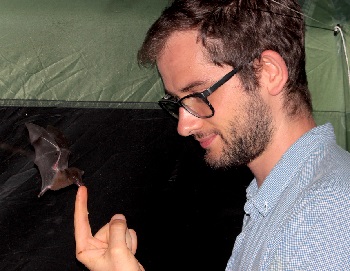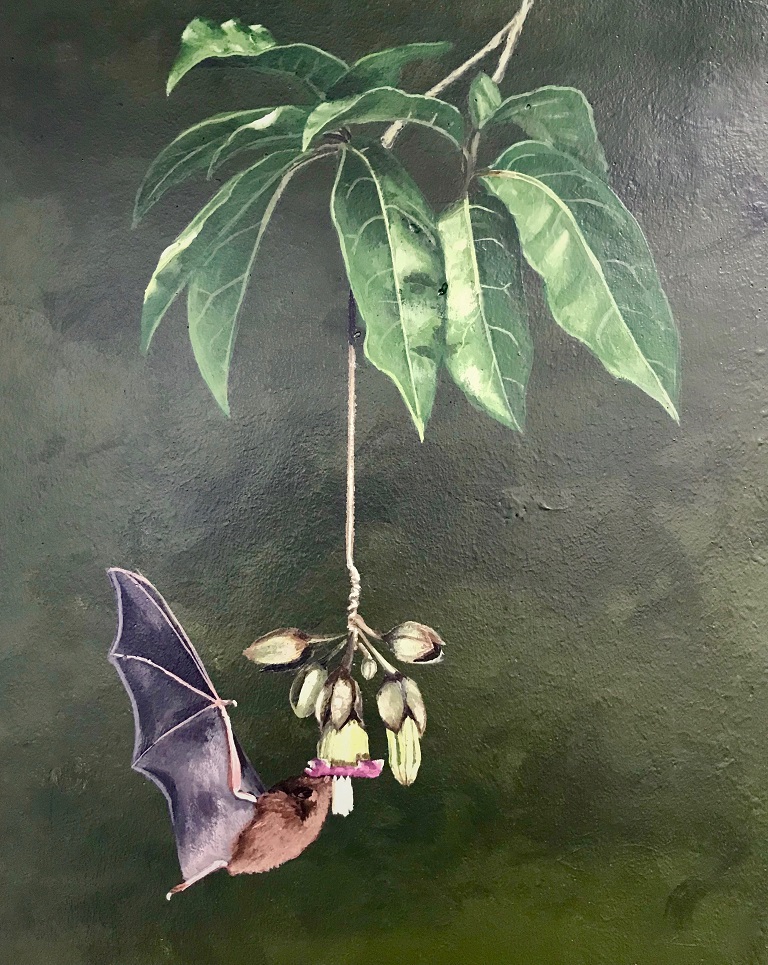Research interests
- Animal-Plant Interactions
- Foraging Behavior of Nectar-feeding Bats
- Pollination Ecology
- Wireless Sensor Networks
- Genetic Structure of Chiropterophilous Plants
- Scientific Illustration

Scientific projects
In the tropics, several hundreds of plant species reproductively depend on bats as pollinators. Hence, bats essentially contribute to maintaining the natural dynamics and regeneration of tropical habitats. Furthermore, the pollination mutualism between bats and plants provides a fascinating model for understanding the ecological and evolutionary forces that form the interactions between both partners. Nectar is usually provided in only small portions so that bats as flying mammals need to accomplish a large number of flower visits every night to meet their high energetic demands. The exploitation of floral resources is therefore associated with high energetic expenditures for the bats, which is why they can be expected to be under strong selective pressures on efficient foraging behavior.
In my dissertation project, I focus on the interactions between neotropical nectar-feeding bats (Glossophaga commissarisi, G. soricina, and Hylonycteris underwoodi) and the Solanaceae Merinthopodium neuranthum, a keystone resource for nectarivorous bats in the Caribbean lowland rainforests in Costa Rica. While M. neuranthum produces flowers with small quantities of nectar reliably throughout the year, there are also several plants that together form a six month period of high nectar availability every year. In my master thesis I could show that these plants compete for pollinators at the time when the high-energy plants start their flowering period.
In my dissertation I want to look at further aspects of this bat-plant interaction:
- How efficiently do nectar-feeding bats extract nectar from flowers of M. neuranthum?
- How regularly do individual bats visit a particular flower and what is their movement pattern between different plants?
- What is the genetic structure of M. neuranthum and which effect does the competition for pollination have on the genetic diversity of the plant’s offspring?
The fieldwork for these projects is conducted at La Selva Biological Station in Costa Rica and my research is carried out in cooperation with the Museum of Natural History (Museum für Naturkunde) in Berlin and the Phillips-University in Marburg. I am funded by the Landesgraduiertenförderung (LGF).

Conference contributions
Bechler JP, Tschapka M (2018) Energy-limitation in nectar-feeding bats promotes competition for pollinator services among bat-pollinated plants. Oral presentation at the XI International Symposium on Pollination in Berlin.
Bechler JP, Ripperger S, Tschapka M (2018). A new application of wireless sensor networks in bat research: Assessing foraging strategies in nectar-feeding bats. Poster presentation at the ‘Deutsches Treffen für Fledermausforschung’ in Heidesee, Germany.
Bechler JP, Tschapka M (2017). Changes in flower visitation behavior of nectar-feeding bats according to floral resource availability. Oral presentation at the ‘Tagung Deutscher Fledermausforscher’ in Vallendar, Germany.
Bechler JP, Tschapka M (2016). Purple bells, purple bells, nectar all the way... Stable food for nectar-bats in lean times. Poster presentation at the 17th International Bat Conference in Durban, South Africa.
Bechler JP, Tschapka M (2016). Purple bells feed nectar-bats in lean times. Poster presentation at the European Conference of Tropical Ecology in Göttingen, Germany.
Contact
- Jan Bechler
Institute of Evolutionary Ecology
and Conservation Genomics
University of Ulm
Albert-Einstein-Allee 11
89081 Ulm
Germany
Tel: -
Email: jan.bechler()uni-ulm.de
